Nineteenth Century
Max Und Moritz
Cartoon violence? God forbid!The Wikipedia page.
Posted By: Paul - Tue Oct 01, 2019 -
Comments (1)
Category: Animals, Antisocial Activities, Death, Destruction, Domestic, Cartoons, Stop-motion Animation, 1940s, Europe, Nineteenth Century
Mystery Illustration 85
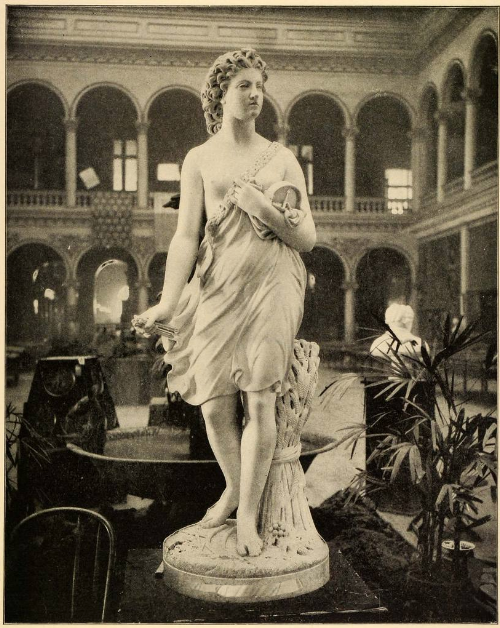
This female figure was intended to represent something very tangible: ie, not "virtue," "justice," etc.
What was the thing she represented?
The answer is here.
Or after the jump.
More in extended >>
Posted By: Paul - Sat Sep 14, 2019 -
Comments (8)
Category: Statues and Monuments, Nineteenth Century
A Manual of Gesture
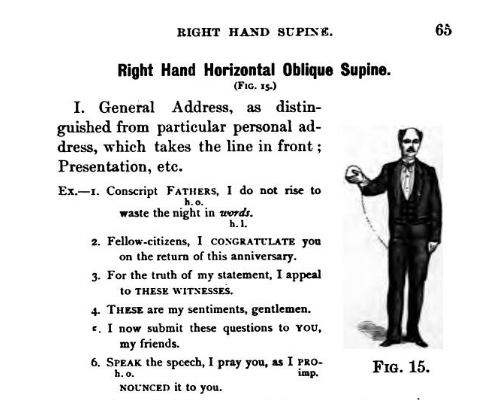
All the things to do with your person while performing in public.
Full text here.
Posted By: Paul - Sat Jun 22, 2019 -
Comments (1)
Category: Body, Etiquette and Formal Behavior, Experts and Authority Figures, Nineteenth Century
Mystery Gadget 77
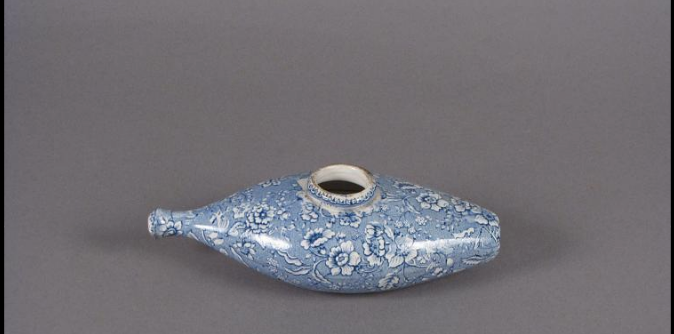
Maybe an ocarina?
The answer is here.
And after the jump.
More in extended >>
Posted By: Paul - Mon Jun 17, 2019 -
Comments (4)
Category: Eighteenth Century, Nineteenth Century
The Prix Guzman
Wikipedia explains:The Prix Pierre Guzman (Pierre Guzman Prize) was the name given to two prizes, one astronomical and one medical. Both were established by the will of Anne Emilie Clara Goguet (died June 30, 1891), wife of Marc Guzman, and named after her son Pierre Guzman. This prize was a sum of 100,000 francs, to be given to a person who succeeded in communicating with a celestial body, other than Mars, and receiving a response.
Did the Apollo 11 astronauts really "communicate" with another world to qualify for the prize?
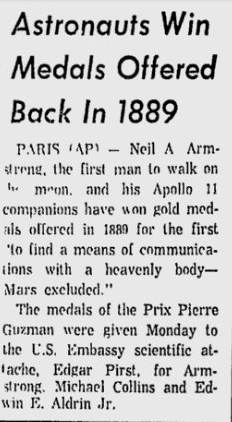
Source of article.
Posted By: Paul - Fri May 31, 2019 -
Comments (3)
Category: Aliens, Certificates, Diplomas, and Other Testaments of Achievement, Communications, Spaceflight, Astronautics, and Astronomy, 1960s, Europe, Nineteenth Century
Raising a Perfect Wife From Scratch
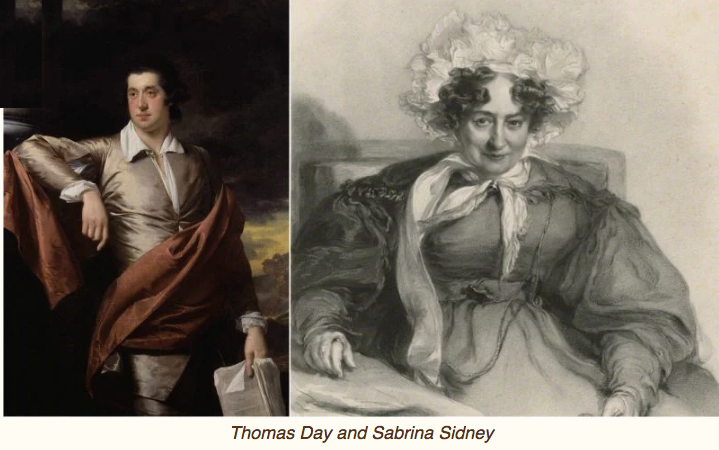
Sabrina Sidney, was a British foundling girl taken in when she was 12 by author Thomas Day, who wanted to mould her into his perfect wife. Day had been struggling to find a wife who would share his ideology and had been rejected by several women. Inspired by Jean-Jacques Rousseau's book Emile, or On Education, he decided to educate two girls without any frivolities, using his own concepts.
In 1769, Day and his barrister friend, John Bicknell, chose Sidney and another girl, Lucretia, from orphanages, and falsely declared they would be indentured to Day's friend Richard Lovell Edgeworth. Day took the girls to France to begin Rousseau's methods of education in isolation. After a short time, he returned to Lichfield with only Sidney, having deemed Lucretia inappropriate for his experiment. He used unusual, eccentric, and sometimes cruel, techniques to try to increase her fortitude, such as firing blanks at her skirts, dripping hot wax on her arms, and having her wade into a lake fully dressed to test her resilience to cold water.
The full story here.
Posted By: Paul - Tue May 07, 2019 -
Comments (0)
Category: Eccentrics, Education, Husbands, Wives, Eighteenth Century, Nineteenth Century, Love & Romance
Schenck’s Mandrake Pills

Source of ad.
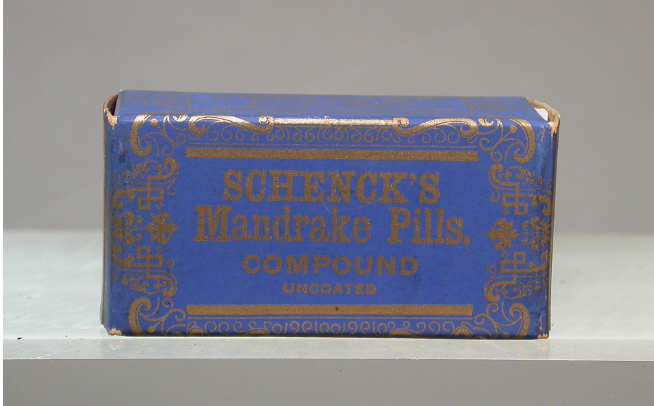
Source of pic.
Click here for product brochure.
Posted By: Paul - Tue Apr 23, 2019 -
Comments (2)
Category: Patent Medicines, Nostrums and Snake Oil, Nineteenth Century, Twentieth Century
The Seminal Pastille
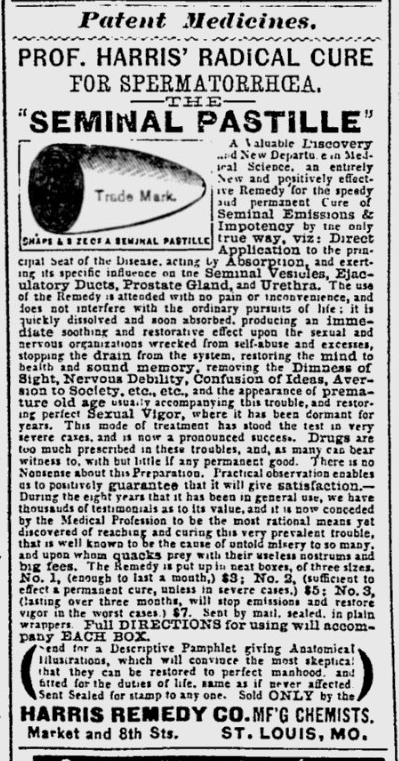
Source.
Posted By: Paul - Wed Apr 10, 2019 -
Comments (3)
Category: Patent Medicines, Nostrums and Snake Oil, Nineteenth Century, Genitals
Victorian Lady in Her Boudoir
Oldest striptease on film?
Posted By: Paul - Sat Mar 30, 2019 -
Comments (0)
Category: Fashion, Movies, Sexuality, Sex Symbols, Nineteenth Century
Stedman Whitwell’s Rational System of Nomenclature
Back in the 19th century, English architect Stedman Whitwell decided that there must be a way to name cities and towns that could not only provide a unique name but also convey geographic information. His idea, as described by George Browning Lockwood in The New Harmony Communities (1902):
The first part of the town name expressed the latitude, the second the longitude, by a substitution of letters for figures according to the above table. The letter “S” inserted in the latitude name denoted that it was south latitude, its absence that it was north, while “V” indicated west longitude, its absence east longitude.
Extensive rules for pronunciation and for overcoming various difficulties were given. According to this system, Feiba Peveli indicated 38.11 N., 81.53 W. Macluria, 38.12 N., 87.52 W., was to be called Ipad Evenle; New Harmony, 38.11 N., 87.55 W., Ipba Veinul; New Yellow Springs, Green county, Ohio, the location of an Owenite community, 39.48 N., 83.52 W., Irap Evifle; Valley Forge, near Philadelphia, where there was another branch community, 40.7 N., 75.25 W., Outeon Eveldo; Orbiston, 55.34 N., 4.3 W., Uhi Ovouti; New York, Otke Notive; Pittsburg, Otfu Veitoup; Washington, Feili Neivul; London, Lafa Vovutu.
The principal argument in favor of the new system presented by the author was that the name of a neighboring Indian chief, “Occoneocoglecococachecachecodungo,” was even worse than some of the effects produced by this “rational system” of nomenclature.
I think the chart above is slightly misleading, as it implies that the top line is for latitude and the bottom for longitude. But if you look at the names Whitwell was coming up with, it's clear that this wasn't the case. It seems, instead, that one had to choose whether to start the name with a vowel (top line) or consonant (bottom line).
If I've understood his system correctly, then the 'rational' name for San Diego (32.71 N, 117.16 W) could be Fena Baveeby. And Los Angeles (34.05 N, 118.24 W) could be Fotu Avapek.
Posted By: Alex - Wed Mar 20, 2019 -
Comments (4)
Category: Geography and Maps, Odd Names, Nineteenth Century

| Who We Are |
|---|
| Alex Boese Alex is the creator and curator of the Museum of Hoaxes. He's also the author of various weird, non-fiction, science-themed books such as Elephants on Acid and Psychedelic Apes. Paul Di Filippo Paul has been paid to put weird ideas into fictional form for over thirty years, in his career as a noted science fiction writer. He has recently begun blogging on many curious topics with three fellow writers at The Inferior 4+1. Contact Us |




